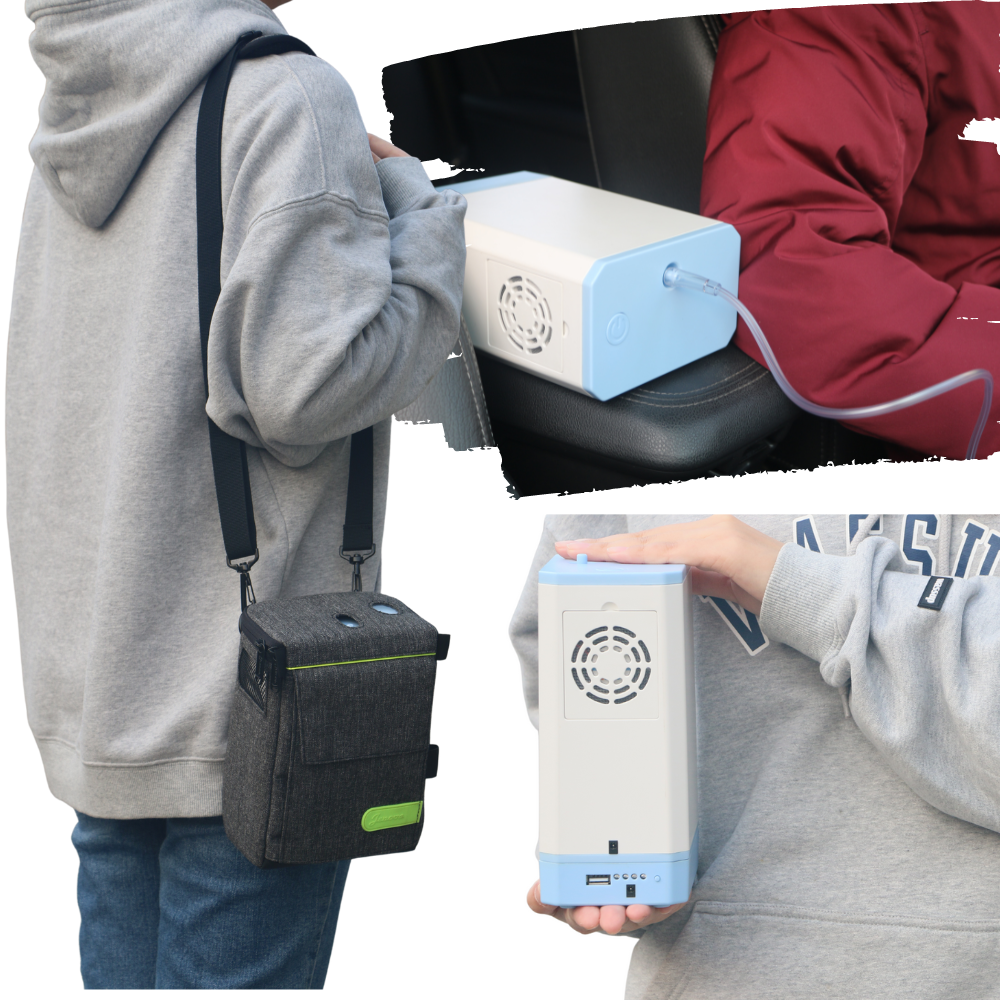Getting The Portable Oxygen Concentrators To Work
Wiki Article
Getting My Portable Oxygen Concentrators To Work
Table of ContentsPortable Oxygen Concentrators for BeginnersPortable Oxygen Concentrators Things To Know Before You BuyNot known Incorrect Statements About Portable Oxygen Concentrators The Of Portable Oxygen Concentrators
Stationary oxygen concentrators were once the requirement, yet these tanks could evaluate 50 extra pounds and were really difficult (Portable Oxygen Concentrators). Now, portable oxygen concentrators do the job, and they can suit a handbag or handbag! The only thing you must remember is that mobile concentrators have a lot more limited oxygen shipment capabilitiesThere are 2 main kinds of portable oxygen concentrators: pulse dosage and continuous circulation. As the name recommends, pulse dosage concentrators supply oxygen periodically, only triggering when you breathe in. This kind of tool is usually advised for COPD patients with restricted oxygen demands, as the quantity of O2 that a pulse dosage concentrator can deliver is relatively reduced.
This gadget can supply up to 3,000 m, L of oxygen every min, while pulse dose gadgets often tend to cover out at 1250 m, L. Continual flow tools are the go-to for many COPD patients, as they're perfect for people that need 2 to 5 liters of oxygen a minute.
Currently that you have this guide to the various kinds of portable oxygen devices, pick the best device with the aid of your physician.
The smart Trick of Portable Oxygen Concentrators That Nobody is Talking About
We understand Americans utilize residential variations in home treatment circumstances. We questioned just how well these mobile oxygen concentrators would certainly function in hospitals. POC concentrators enhance the proportion of oxygen in ambient air individuals inhale, whenever they need a boost. Private-use ones are tiny sufficient to carry about, and might help prevent the requirement to check out overloaded clinics and health centers.When it comes to mobile oxygen treatment, there are two main alternatives for shipment. These are portable oxygen cylinders which include pressed oxygen gas, or oxygen concentrators, which make use of a battery powered system to compress and filter air, in order to produce a consistent supply of concentrated oxygen. In this post, AMS Composite Cylinders Technical Director, Tony Morrin, compares the 2, looking at the benefits and drawbacks of each oxygen delivery system for NHS clinical oxygen customers in regards to individual autonomy.

Mobile Oxygen Concentrator Oxygen pureness is regularly higher when provided from cyndrical tubes it never ever drops below 99. 6%, no matter the circulation price called for. In battery-powered concentrators, pureness is impacted by flow rate, and may be 90% or much less, relying on the devices. Whilst oxygen concentrators can be beneficial for individuals that require a reduced flow of oxygen, cyndrical tubes supply higher concentrations that can be better for patients with high flow needs.
6 Simple Techniques For Portable Oxygen Concentrators
Both systems require the person to carry about devices. For cylinders, this will certainly consist of bring a bag (and sometimes a trolley) and for mobile oxygen concentrators this will include the bag, cart and power charger. Weight smart, mobile oxygen concentrators can be comparable in weight, or often, lighter than traditional aluminium cylinder systems.
They will have to enhance dramatically if they are to provide the exact same degree of performance as similar composite cyndrical tubes. Oxygen always carries a safety and security risk. On one hand, should cyndrical tubes spring a leak, they can produce an oxygen abundant setting that could cause a rise in fire threat.

The distinction is that there are substantial in advance expenses to purchasing a mobile oxygen concentrator, yet lower running costs making use of cyndrical tubes makes it possible for the buyer to spread out the expense over an extensive amount of time. One small drawback of a mobile oxygen concentrator is the noise mobile systems make a substantial amount of sound during procedure, which numerous people discover disruptive.
Some Known Factual Statements About Portable Oxygen Concentrators

Our top notch carbon composite cyndrical tubes use high pressure (300 Bar), low weight, and NLL (Non-Limited Life) efficiency, and are approved for usage worldwide. Additional information concerning AMS Compound Cylinders Ltd can be found at .
Oxygen concentrators are designed with customer flexibility in mind. Whether it's a desktop computer variation for home use or a smaller, lightweight model for on-the-go, these tools permit individuals to relocate openly without being tethered to a stationary device. Particularly for the ones specifically made for mobility, patients can lug them around, helping with traveling and everyday activities with convenience.
One of the major eases of utilizing an oxygen concentrator is the elimination of the constant requirement to refill oxygen containers. This not only reduces the logistical obstacles and recurring prices connected with refills however also makes sure that the user has an extra foreseeable and stable resource of oxygen. Oxygen concentrators are created to fit flawlessly right into the home setting.
Report this wiki page